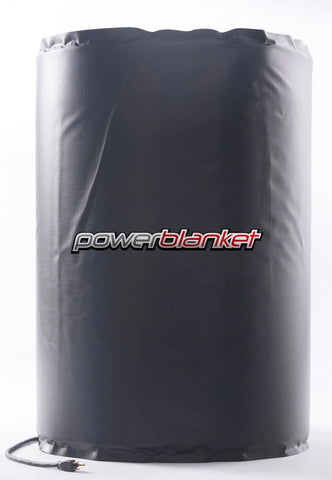A Guide to Understanding 20-Gallon Drum Sizes, Dimensions, and Variations
If you work in process heating, warehousing, or manufacturing, you are probably familiar with the ubiquitous 20-gallon drum. These drums store and transport various materials, from chemicals and lubricants to food products and hazardous waste. However, not all 20-gallon drums are created equal, and it's important to know the dimensions of the drum you're using to ensure that it will meet your needs.
In this article, we'll explore the standard dimensions of a 20-gallon drum, the variations you might encounter, and the implications of those differences. Whether you're buying drums for your business or simply need to know more about the ones you already have, this article will provide the information you need.
Standard 20-Gallon Drum Dimensions
The standard dimensions of a 20-gallon drum can vary slightly depending on the manufacturer, but most drums adhere to a basic set of measurements. These are the exterior and interior dimensions of a typical 20-gallon drum:
- Exterior dimensions
- Height: 21.75 inches (55.25 cm)
- Diameter: 18.75 inches (47.63 cm)
- Interior dimensions
- Height: 21.25 inches (53.98 cm)
- Diameter: 18.25 inches (46.36 cm)
- Weight capacity:
- 440 pounds (199.58 kg)
It's worth noting that the weight capacity of a 20-gallon drum can vary depending on the material it's made of and the specific design of the drum. For example, some drums are designed to hold liquids, while others are intended for solid materials, and the weight capacity will differ for each. Additionally, some drums may be designed to withstand greater stress or pressure, and these will have a higher weight capacity as well.
Here's a table summarizing the dimensions of a standard 20-gallon drum:

Understanding the dimensions of a 20-gallon drum is crucial when selecting the appropriate drum for your needs. The drum's dimensions will affect how much material it can hold, how it can be stored, and how it can be transported. By knowing the dimensions of a 20-gallon drum, you can make an informed decision about which drum is right for your specific use case.
Types of 20-Gallon Drums
While the standard dimensions of a 20-gallon drum are fairly consistent across manufacturers, there are several different types of drums that you may encounter. Here are a few common types of 20-gallon drums:
- Steel drums: Steel drums are a popular choice for storing and transporting hazardous materials, as they are sturdy and durable. They can be lined with an epoxy or phenolic coating to protect the contents from corrosion or contamination. Steel drums may also store food products, such as oils or syrups, as they can be easily cleaned and sanitized.
- Plastic drums: Plastic drums are a lightweight and cost-effective alternative to steel drums. They resist impact and weather, making them ideal for outdoor storage or transport. Plastic drums may be used to store various materials, including chemicals, lubricants, and food products.
- Fiber drums: Fiber drums are made from compressed paperboard and are often used to store dry goods, such as powders or grains. They are not recommended for liquids, as the paperboard can absorb moisture and cause the drum to deteriorate.
- Salvage drums: Salvage drums are designed to contain and transport damaged or leaking containers of hazardous materials. They are often made of steel and feature a tight-fitting lid to prevent spills or leaks.
- Overpack drums: Overpack drums are used to transport smaller containers of hazardous materials. They are designed to fit over the smaller container and provide an additional layer of protection during transport.

By understanding the different types of 20-gallon drums, you can choose the right drum for your specific needs. Different materials may require different types of drums, and certain drums may be better suited for specific storage or transport scenarios. It's important to select the appropriate drum to ensure the safe and effective handling of your materials.
Variations in 20-Gallon Drum Dimensions
While the standard dimensions of a 20-gallon drum are fairly consistent across manufacturers, there can be some variations depending on the specific drum. Here are a few variations in 20-gallon drum dimensions:
- Open head vs. tight head: Open-head drums feature a removable lid, while tight-head drums have a fixed top with only a small opening for pouring. Open-head drums may have slightly different dimensions than tight-head drums due to the lid's design.
- UN rating: Some 20-gallon drums are certified by the United Nations for transporting hazardous materials. These drums will have additional markings indicating their UN rating and may have slightly different dimensions to meet UN requirements.
- Material thickness: The thickness of the material used to construct the drum can affect the drum's dimensions. Thicker drums may have slightly smaller interior dimensions to account for the thickness of the walls.
- Tapered vs. straight-sided: Some 20-gallon drums may have a tapered design, meaning that the diameter of the drum is narrower at the bottom than at the top. This can affect the amount of material that the drum can hold, as well as how the drum can be stacked or stored.
- Drum fittings: 20-gallon drums may be equipped with various fittings, such as bungs, vents, or pumps, which can affect the overall dimensions of the drum.
It's important to be aware of these variations in 20-gallon drum dimensions when selecting a drum for your specific use case. By understanding the specific dimensions of the drum, as well as any additional features or certifications, you can make an informed decision about which drum is right for your needs.

Wrapping Up: Key Takeaways for Using 20-Gallon Drums
In conclusion, understanding the dimensions of a 20-gallon drum is essential for anyone working in process heating, warehousing, or manufacturing. By knowing the exterior and interior dimensions of a standard 20-gallon drum, as well as the weight capacity, you can select the appropriate drum for your specific needs.
It's also important to be aware of the different types of 20-gallon drums available, such as steel, plastic, and fiber drums, as well as any variations in dimensions depending on the specific drum.
By taking the time to select the right drum for your materials, you can ensure the safe and effective storage and transport of those materials. Whether you're purchasing drums for your business or simply need to know more about the ones you already have, this article provides the information you need to make an informed decision.







